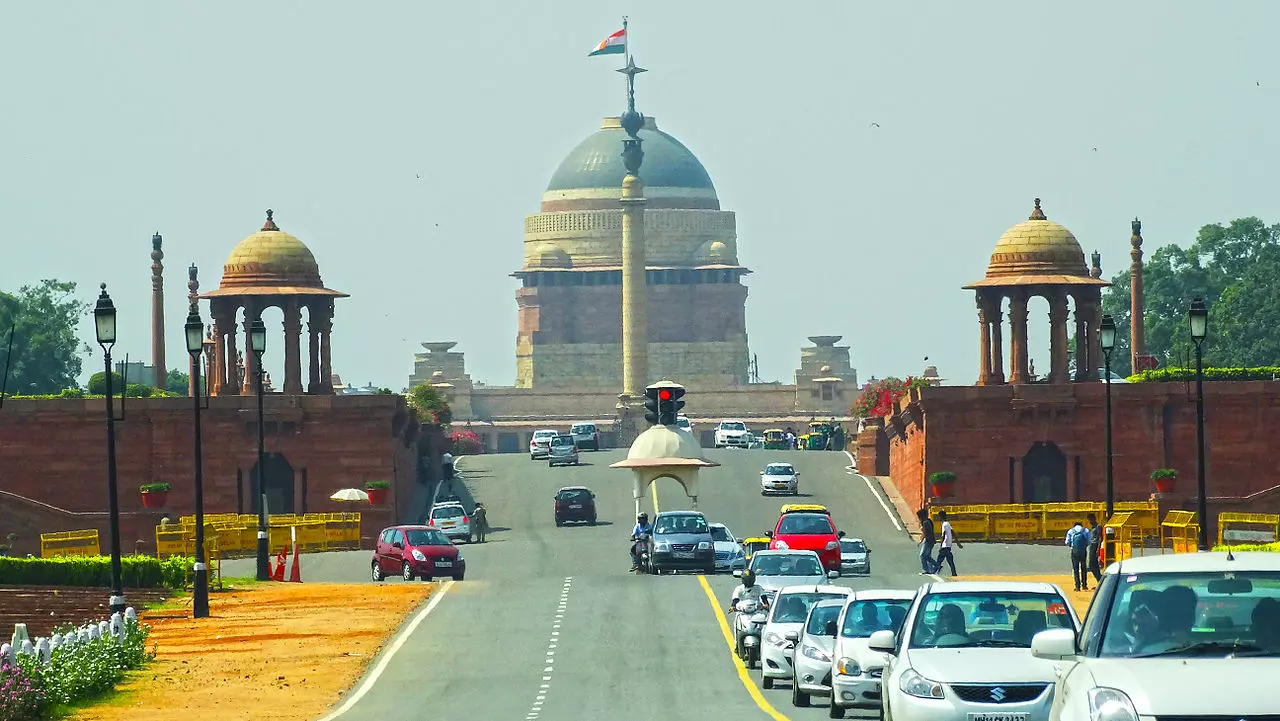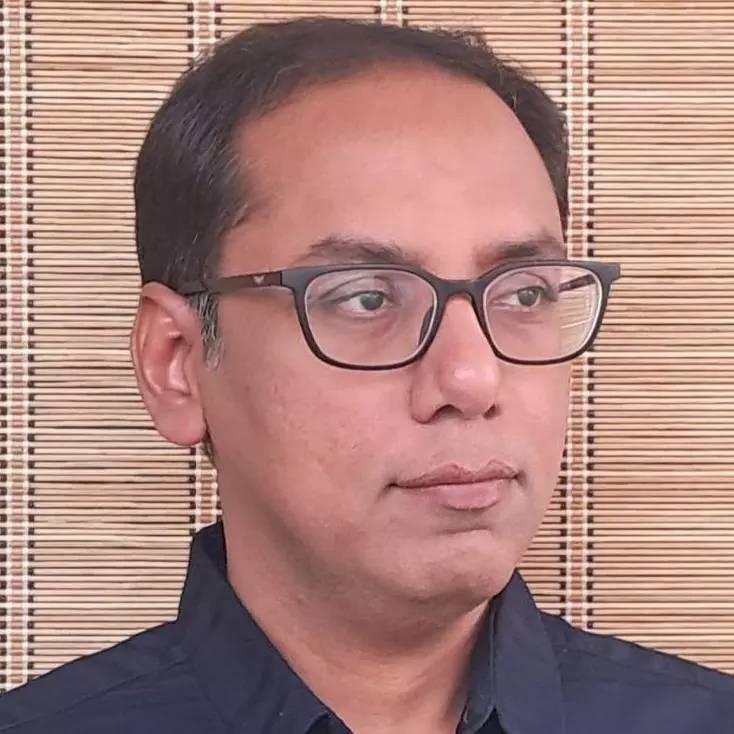Why Delhi? Shed baggage, build a new capital at a place that borders 5 poor states
Delhi is a legacy of Khaljis, Tughlaqs, Mughals and the British

HYDERABAD: The word London makes one recall English. So does Washington for what America stands for. Beijing represents all that is China. Similarly, a large and wealthy empire was named after Rome, the capital city. The principal seat of power always represents and will be synonymous with its country.
For the last eight centuries, Delhi has occupied such a proud place in India. People across the world identify India with Delhi and vice versa. Thought of any other Indian city replacing Delhi might have never come to the minds of citizens.
Although the principal seat of power of the East India Company had been Calcutta for more than 100 years, the British viceroy and Governor-General of India Lord Lytton chose Delhi to organize an imperial durbar in 1877 to proclaim Queen Victoria as the Empress of India as he believed that the former capital of the Mughals would give the durbar a greater legitimacy. The next two durbars — 1905 and 1911 — were also held in Delhi.
Ever since the British re-designated Delhi as the capital in 1911, its preeminent status among Indian cities was never challenged as most Indians believed that Delhi was the national capital by default. Of late, however, murmurs have begun in the country that question Delhi’s exclusive claim to be the national capital.
In August, a section of Hindu seers and scholars — as part of their project to establish the Hindu Rashtra — proposed to make Varanasi the national capital. Within a few days, Assam Chief Minister Himanta Biswa Sharma questioned Delhi’s prerogative to be the national capital and called for establishing five capitals for the country.
For many, who are not well-versed in history, this challenge to Delhi could appear preposterous. In the last 3,500 years of recorded history, Delhi has been the capital of a mighty kingdom or empire merely during four time periods — that of the Pandavas, Delhi-based early Muslim dynasties, the Mughals (Babur, Humayun, Shah Jahan and Aurangzeb) and the latter part of the British rule.
While Delhi in its ancient avatar of Indraprastha was the capital of the Pandavas when they asserted Independence from their uncle, the newfound status of the land, which was part of the forest, did not last long as the Pandavas had lost everything in the game of dice.
Delhi regained its glory when Prithviraj Chouhan inherited it from his relative and began to stay in the city with his wife Sanyogita, though his capital continued to remain Ajmer. After Prithviraj was defeated, Muhammad Ghori’s appointee — Qutb ud-Din Aibak — ruled his Indian territories from Delhi for a few years and later shifted the capital to Lahore, where he died.
Delhi got back imperial status in 1211 during the reign of Iltutmish. While the kingdom expanded to the northeastern parts of India, the empire was under the constant threat of invasion by Genghis Khan, the greatest conqueror to date. The city continued to be the capital of a vast empire for the next 200 years. But it lost its aura for the next 130 years when it was ruled by the Sayyids and the Lodhis. The city became the seat of imperial power for 82 years once again during the rule of Mughals like Babur (four years), Humayun (11 years), Shah Jahan (18 years) and Aurangzeb (49 years).
Following the death of Aurangzeb, the power shifted to Poona as the Marathas became the preeminent power in the country. But Delhi became the prime power centre once again in 1911 when the British shifted the capital from Calcutta (Kolkata) and continued to be so for 111 years.
Without taking into account the status that Delhi (Indraprastha) enjoyed under the Pandavas briefly before they were banished, the city was the seat of power of large territory only for 393 years — 282 years under the Delhi Sultanate and the Mughals, and 111 years under the British and after the Independence.
While a timeframe of four centuries in the thousands of years long history of India does not lend Delhi an indisputable claim to be the national capital, the city had a chequered reputation of being unlucky for its ruler, whenever it became the seat of imperial power.
In its avatar as Indraprastha, the Pandavas were banished shortly after they acquired imperial status on the basis of the Rajasuya sacrifice.
When Iltutmish brought back the glory of Delhi after several thousands of years, he and his successors were constantly haunted by the threat of Mongol rulers. Though Delhi became the capital of the greatest extent of land — perhaps after Ashoka’s empire — under Alauddin Khalji, the expansion sowed the seeds of disintegration. After a few initial successful conquests, Muhammad bin Tughluq faced reversals which led to the disintegration of his empire and the establishment of the Vijayanagara Empire in the south and the Deccan Sultanates in central India.
After a hundred odd years, Babur restored imperial status to Delhi, but he did not live long to enjoy the fruits of his Indian conquest. Though his son Humayun ascended the throne of Delhi, he lived most of his life as a nomad.
Akbar believed Agra to be lucky for him and so did his son Jahangir. But Shah Jahan shifted his capital to Delhi during the latter part of his reign, which was followed by the battle of succession among his sons, and his internment at the Agra fort, away from the beautiful home — Red Fort — that he had built for himself. Aurangzeb ruled his vast empire from Delhi, but he was mostly away from Delhi, bogged down by revolts that sprang up across the empire.
In 1877, Delhi got back some of its prominence when Viceroy Lord Lytton chose a ground outside the walled city of Delhi to organise an imperial durbar to declare Queen Victoria as the Empress of India. But he heard the first formal plea for equal rights for Indians as enjoyed by the Queen’s British subjects. After the capital was shifted to Delhi in 1911, the Indian freedom movement gathered steam while the British were caught up in problems in continental Europe, followed by the First World War.
Going by history or, to some extent, by luck, Delhi does not have an exclusive right to be the national capital. India had better records when the imperial capital was in other cities like Pataliputra — the modern Patna. So is it time to build a new national capital with global standards, shedding unpalatable historical baggage, and befitting India’s new stature in a region where India’s five backward states, UP, Bihar, Jharkhand, Madhya Pradesh and Chhattisgarh, meet — Uttar Pradesh’s Sonbhadra district?
Building a new national capital in a backward region like Sonbhadra district of Uttar Pradesh could serve as an economic growth engine for five backward states like Uttar Pradesh, Bihar, Jharkhand, Chhattisgarh and Madhya Pradesh, which in turn could propel the country’s economic growth further.
Despite history, logic and economic rationale supporting the idea of the new national capital, can the central government or any political party bite the bullet?
(This article does not represent the views of Deccan Chronicle)

